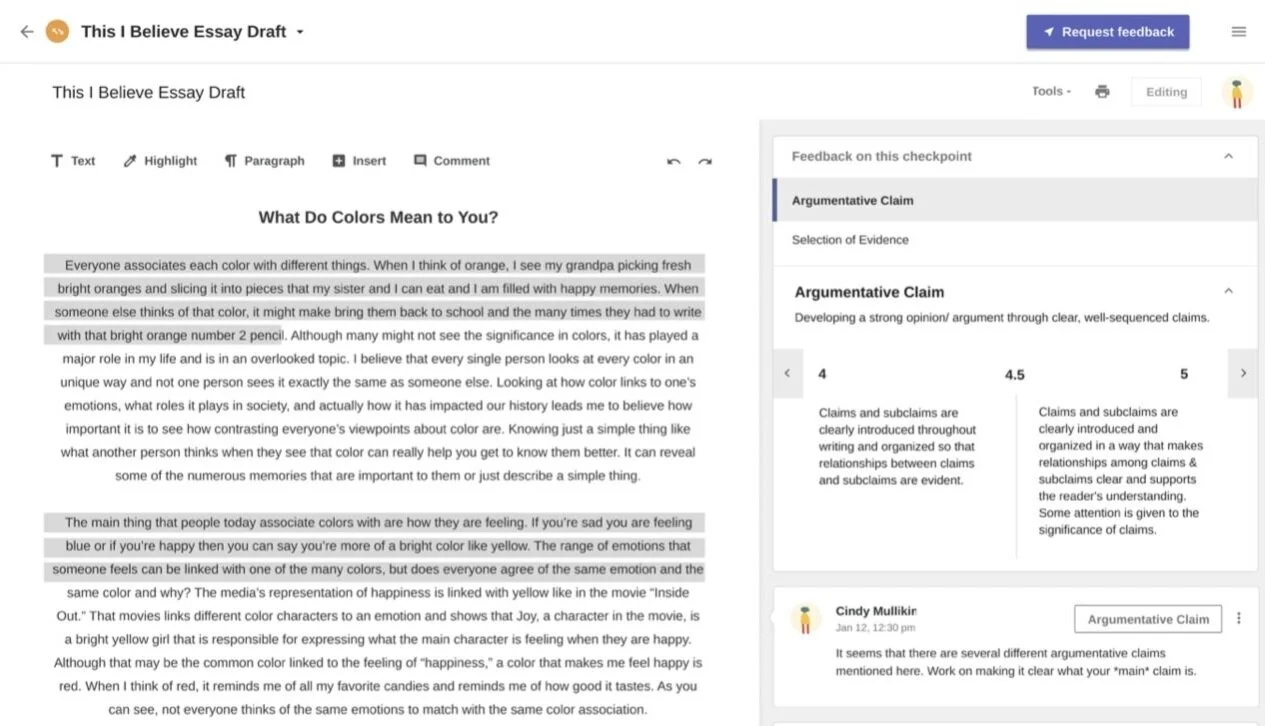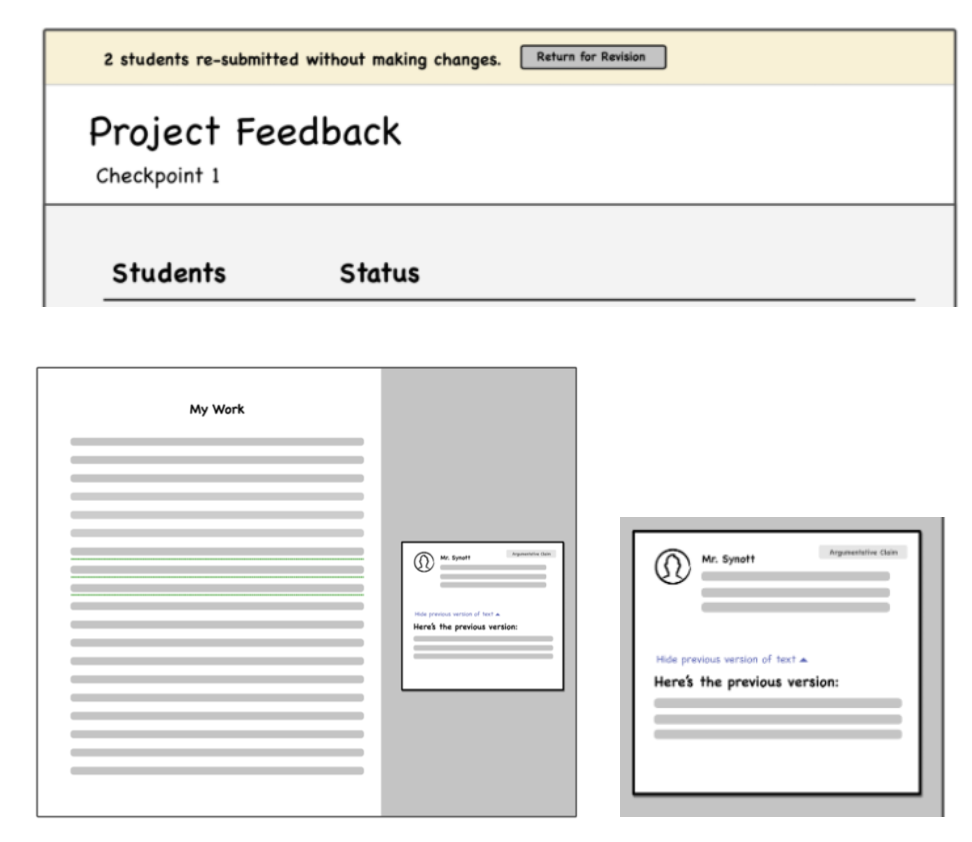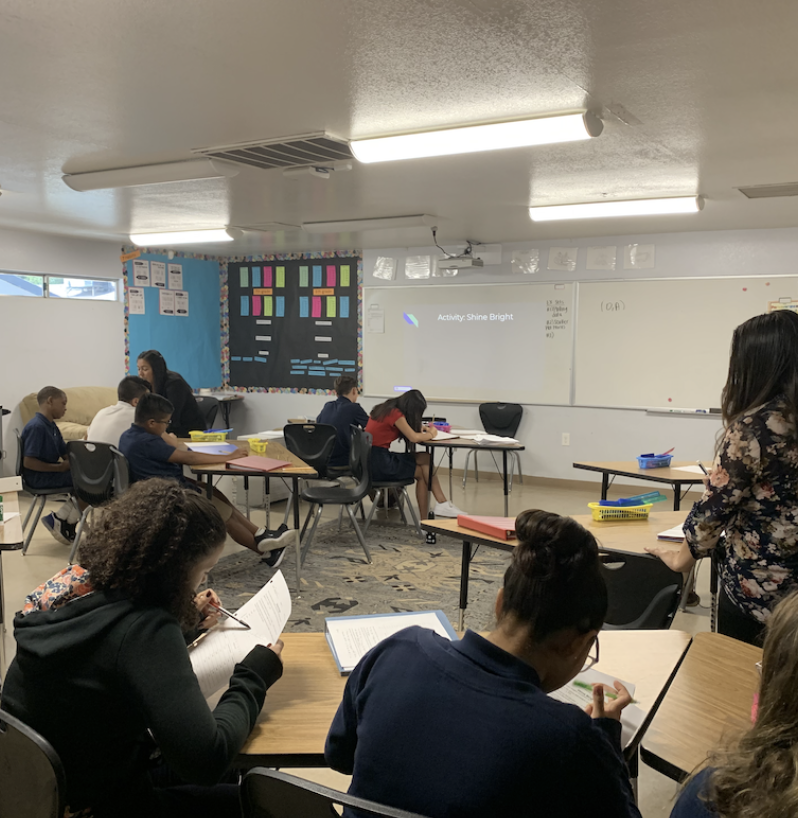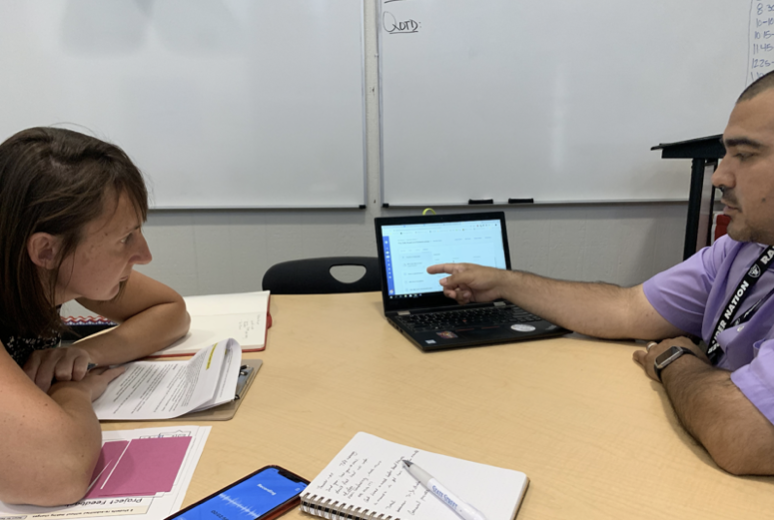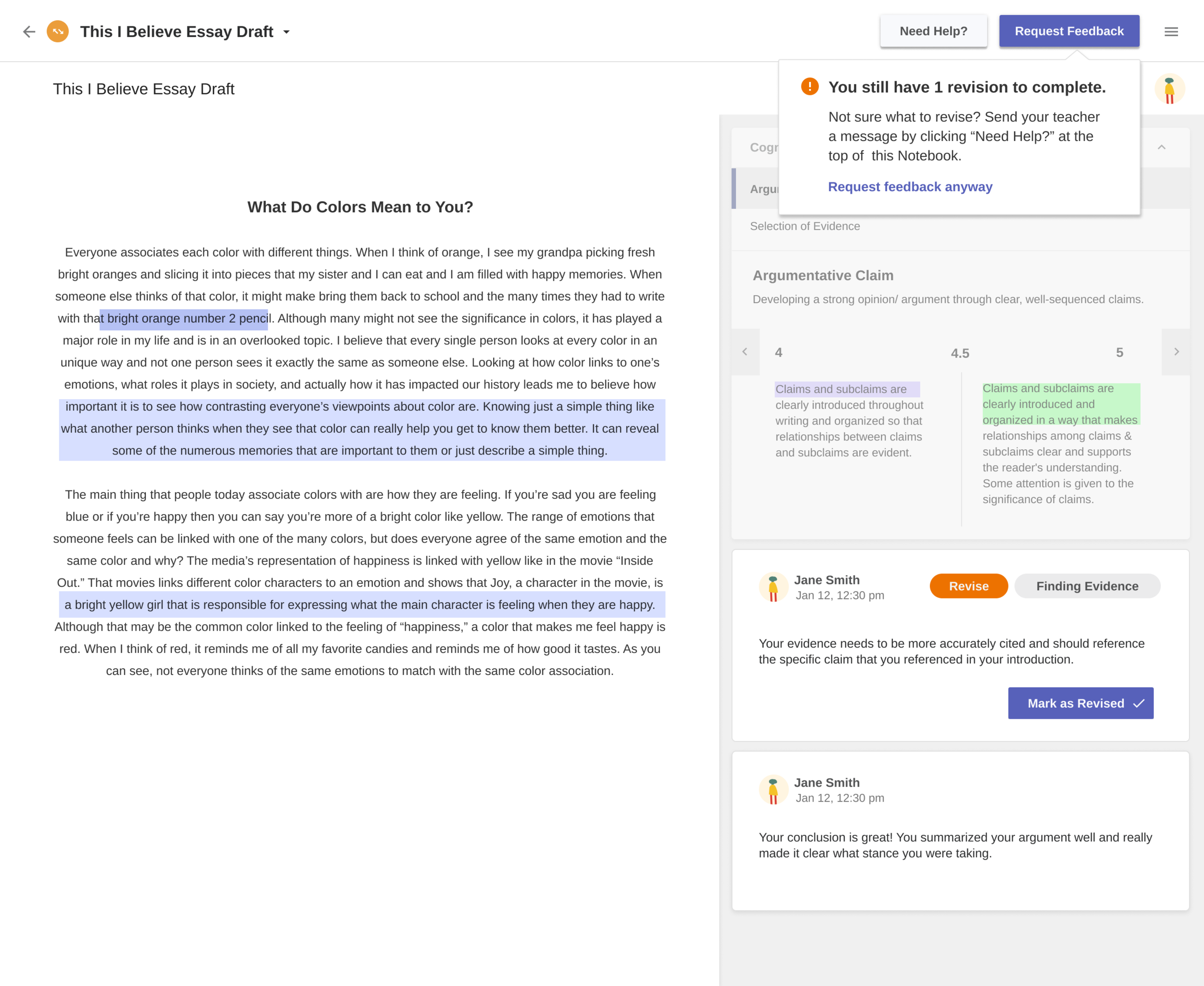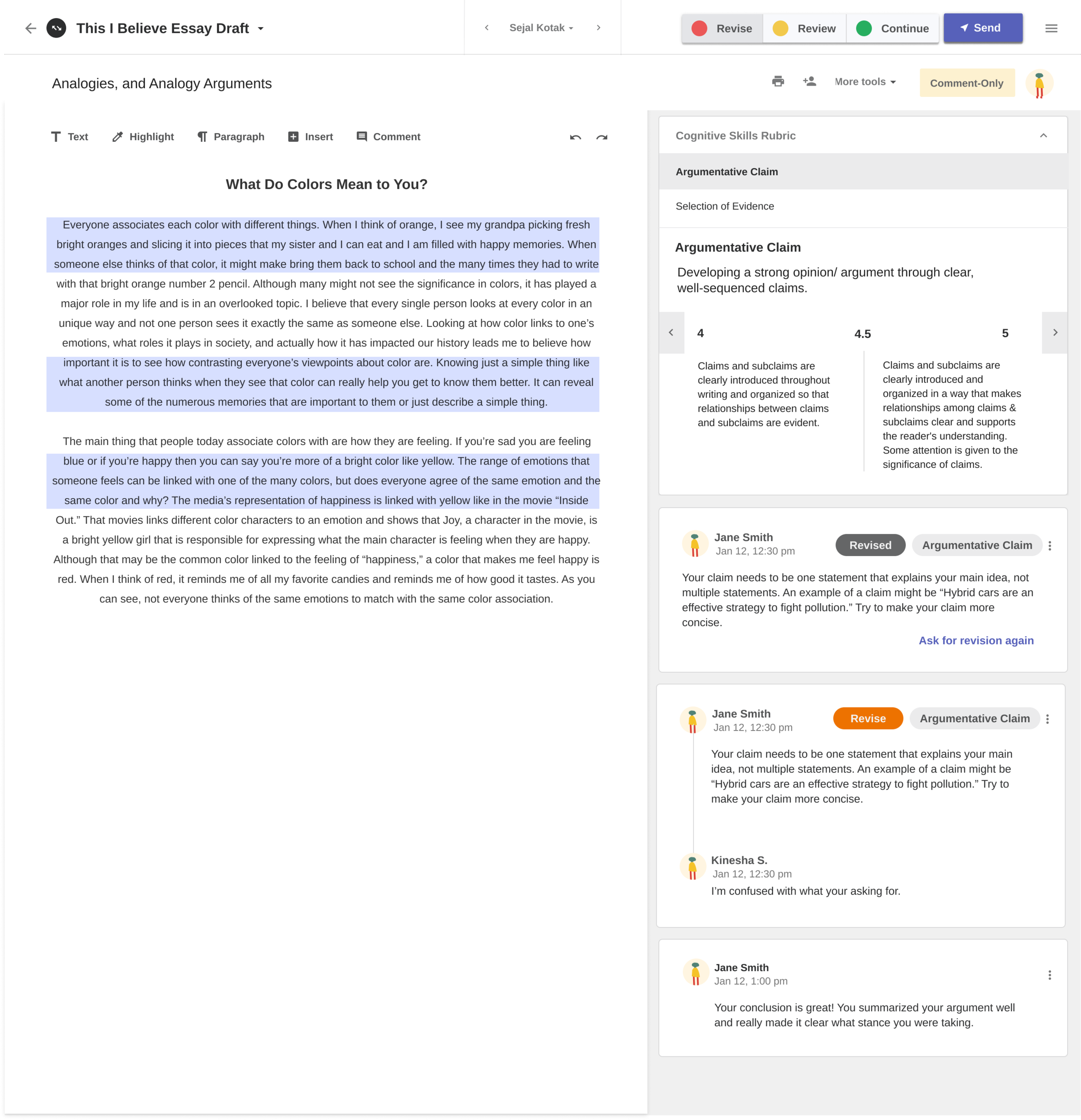Needs Revision Feature
Duration: 6 months from design to build
Providing students clear and actionable feedback on their work is a core behavior that increases academic outcomes. I was tasked with exploring concepts that could make the process of providing and receiving feedback more efficient and higher quality. To get started, I planned a design sprint and partnered with another product designer to co-design with me so we could aim to have two candidate concepts in a 6 week sprint that included research in the field, brainstorms, concepting and a stakeholder review.
Existing Version of Feedback Comments
Problem Statements We Focused On
“I don’t always know how to respond to the feedback my teacher gives me.”
“I don’t like wasting my time to look for changes if there are no changes. I have a hard time seeing what, if any feedback was incorporated by my students.”
Concept Testing
To move fast, the core project team (myself, an engineer, a design researcher) brought early concepts into the field for teachers and students to react to. Many of the concepts we shared resonated but we had to narrow down to those that we thought were the most technically feasible (could move into development soon), and most aligned with the pedagogical vision of our Summit learning partner.
Research Insights
STUDENTS
Having access to resources within a comment was generally well-received.
Having a checklist to organize and prioritize comments resonated with students that were receiving lots of comments/scrolling and had trouble tracking them and knowing what was most important.
TEACHERS
All teachers found requiring students to complete feedback as if they were tasks to be high value since it increased the sense of student accountability
Showing the the previous version of text within a comment card was selected also a highly desired concept by teachers since they had no version history to see what had changed
Narrowing Concepts
In order to meet our release goals, we used the following criteria to select a concept to move forward. We selected the student task / mark completion concept as it had value for both students and teachers in addition to meeting technical constraints.
Engineering complexity
Time to build
User value
Summit learning vision alignment
Visual and Interaction Design Explorations
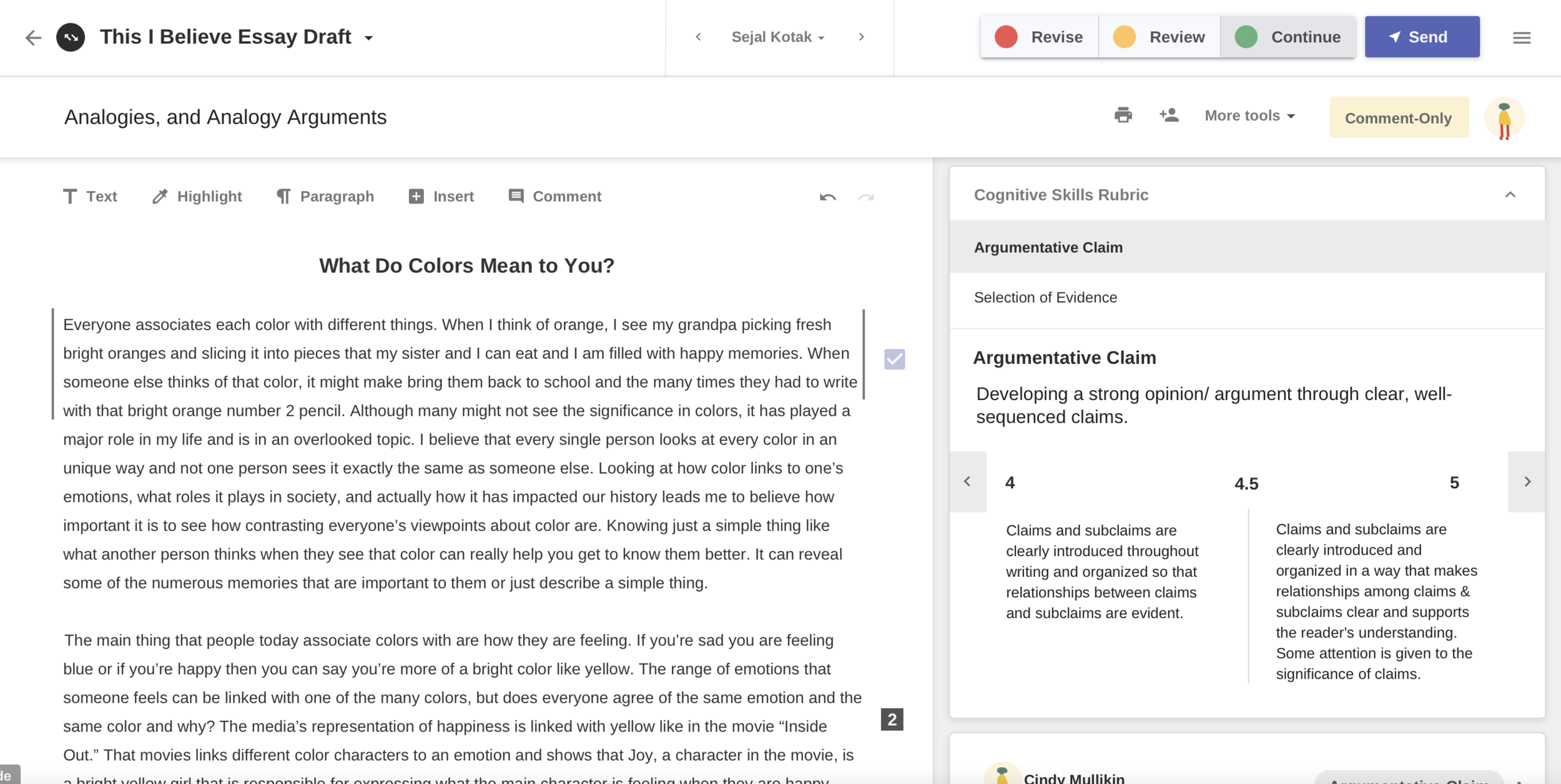
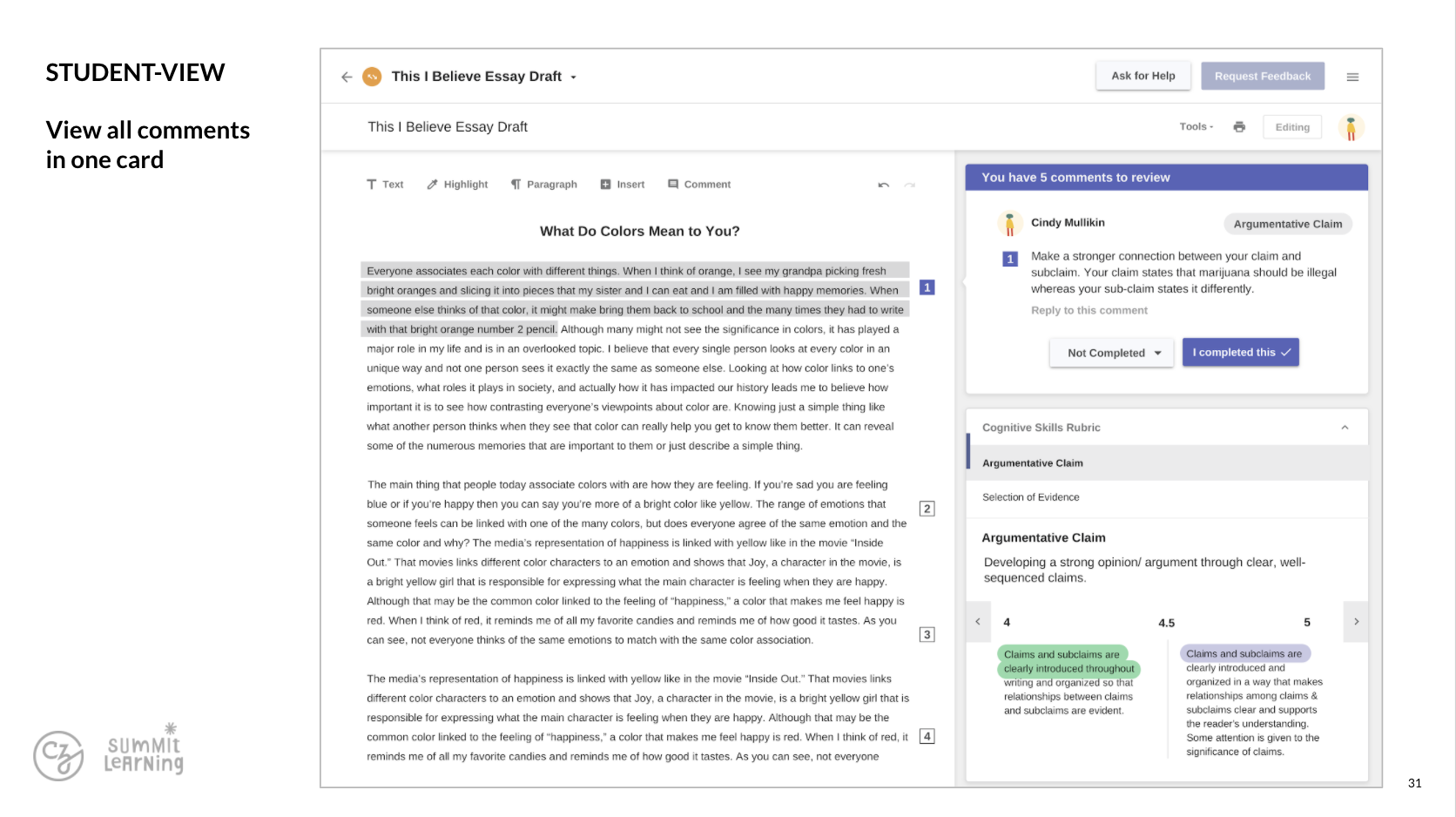
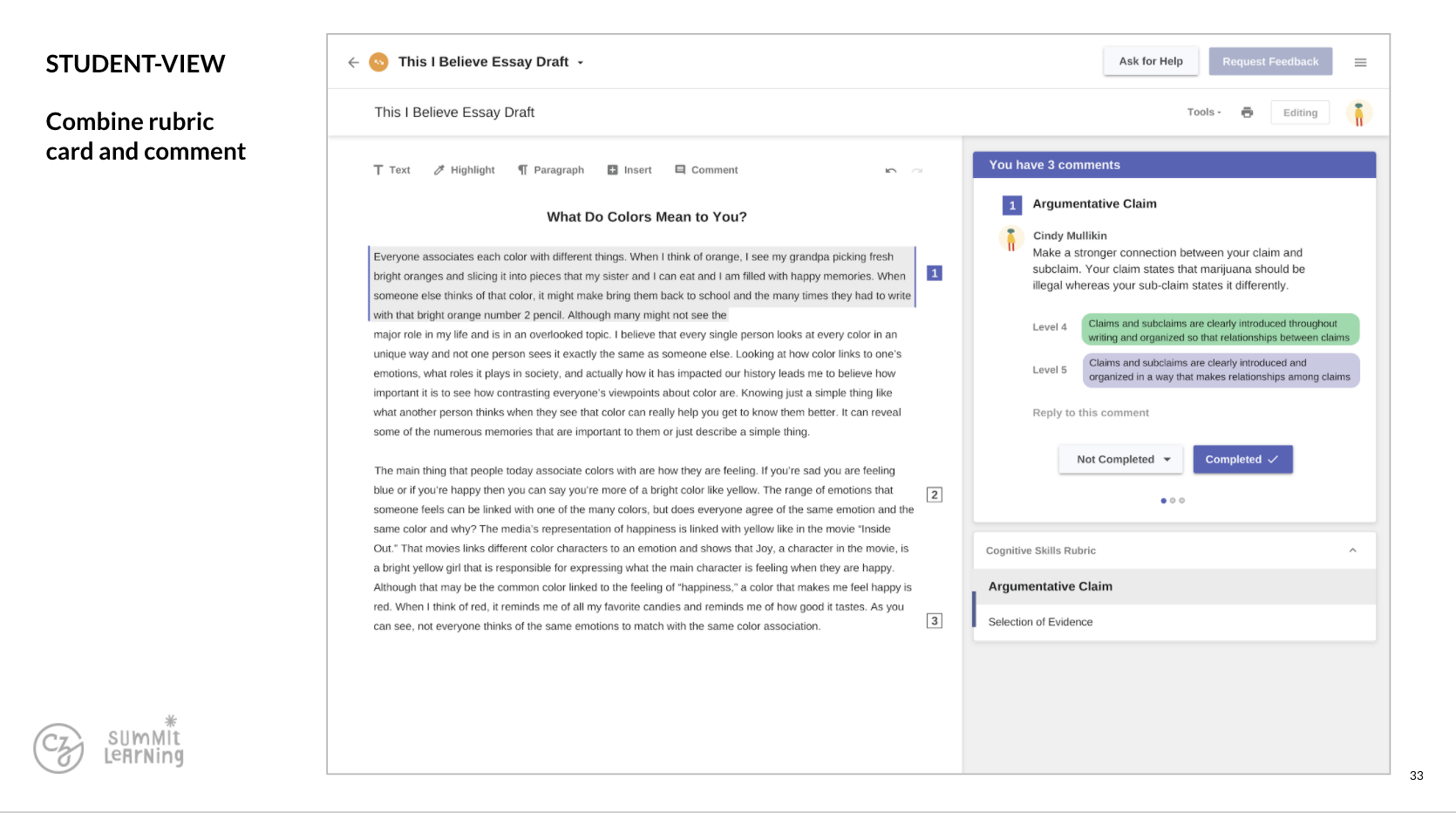
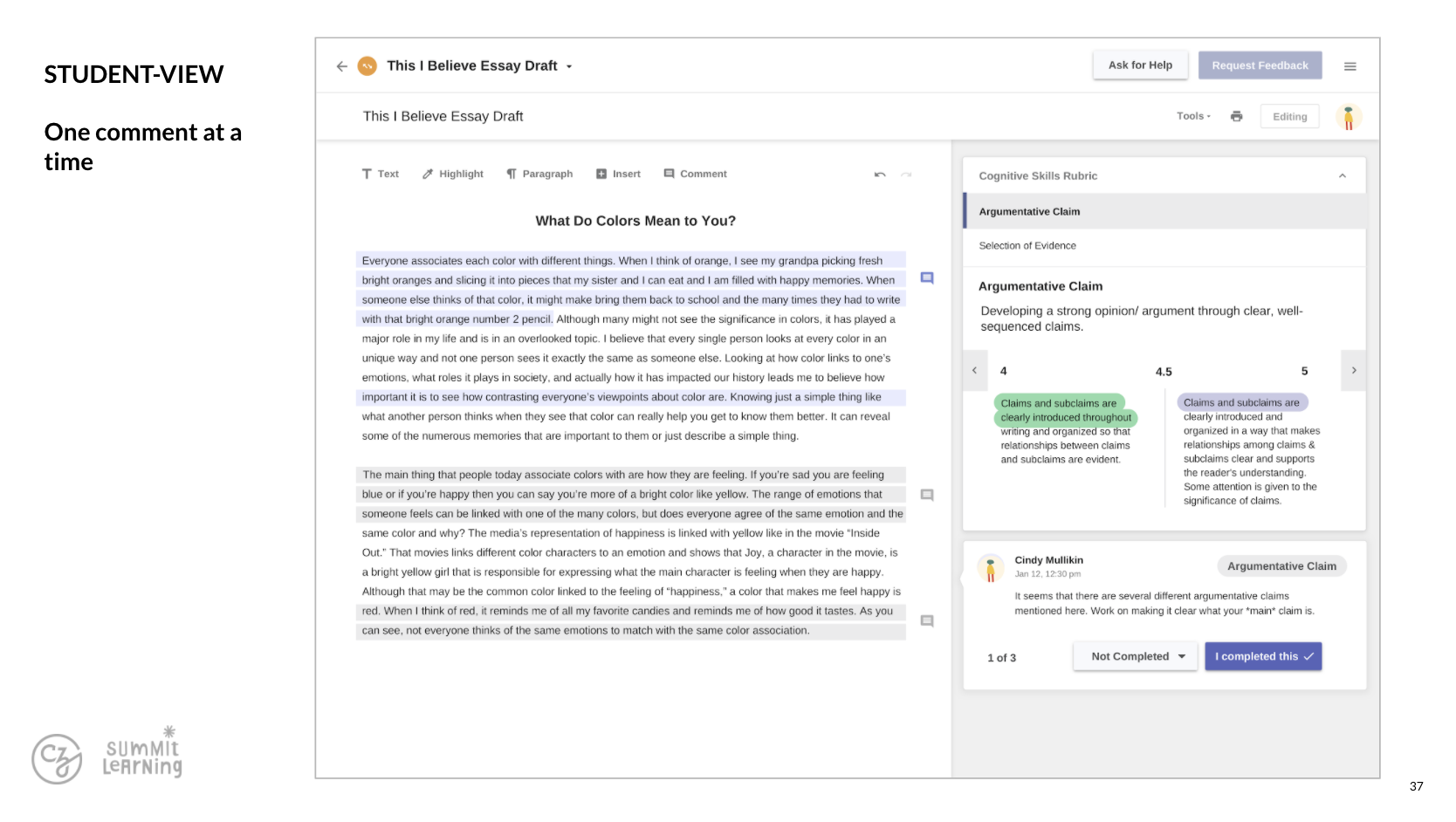
Prototype for Evaluative Testing
Final Design
Based on feedback from teachers on the prototype, I refined the design. I also collaborated with the engineering team to scope out the work and based on complexity of development had to compromise certain aspects of the ideal design in order to meet our release goals.
Main changes based on research and technical feasibility were:
Making the wording clearer, task framing wasn’t aligning with teacher’s mental model
Making the re-opening state clearer
Leveraging existing comment re-flow pattern versus bundling comments into one card
Student Views
Teacher Views
Measuring Success
Although we had no baseline for this new type of feedback experience since comments couldn’t be labeled as ‘Needs revision’ prior to this feature release, we were able to compare types of threads over time to see if teachers were engaging with the feature. We also were able to measure if students were ‘marking’ the feedback as revised.
The graphs below show that comments marked as ‘Need Revision’ become a large majority of all comments (blue line in top graph and blue bar in second).
